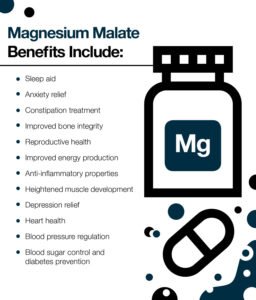Physical Therapy for a High Ankle Sprain
Understanding High Ankle Sprains
A high ankle sprain is a distinct injury affecting the ligaments above the ankle, known as the syndesmosis. This group of fibrous tissues connects the tibia and fibula, providing stability to the lower leg. Unlike the more common lateral ankle sprain, which impacts ligaments on the outer foot, high ankle sprains often result from forceful outward twisting of the foot while the leg remains stable. This injury is prevalent in high-impact sports like football, soccer, or hockey and may involve a fibula fracture or diastasis (widening between the tibia and fibula).
Symptoms of a High Ankle Sprain
High ankle sprains present a range of symptoms, including:
-
Pain just above the ankle joint
-
Swelling in the affected area
-
Difficulty walking or bearing weight
-
Stiffness and reduced mobility
-
Instability or a sensation of the leg giving way
Diagnosis Process
Accurate diagnosis is critical for effective treatment. A healthcare provider will:
-
Physical Examination: Palpate the area above the ankle to check for tenderness and inquire about the injury’s circumstances.
-
Specialized Tests: Conduct specific assessments to evaluate syndesmosis ligament damage.
-
Imaging: Order X-rays to detect fractures, and in some cases, MRI or CT scans to assess ligament damage or bone separation.
Grading High Ankle Sprains
High ankle sprains are classified into three grades based on severity:
-
Grade 1: Minor tearing of the anterior inferior tibiofibular ligament (AITFL) without instability or syndesmosis widening.
-
Grade 2: Partial tearing of the AITFL and interosseous ligament, causing instability but no bone separation. The deltoid ligament may also be affected.
-
Grade 3: Severe tearing of multiple ligaments (AITFL, interosseous, and posterior inferior tibiofibular ligament), leading to instability, bone separation, and often a fibula fracture.
Physical Therapy for Recovery
Physical therapy (PT) is a cornerstone of treatment for Grade 1 and some Grade 2 high ankle sprains, focusing on reducing symptoms and restoring function. PT progresses through distinct phases, each tailored to the healing stage.
Acute Phase
In the initial weeks post-injury, the ankle is typically immobilized in a protective boot to safeguard the ligaments. PT during this phase emphasizes:
-
Gentle Mobility Exercises: Promote movement without stressing the ligaments.
-
Strengthening Activities: Maintain muscle function in the lower leg.
-
Pain and Swelling Management: Utilize modalities like electrical stimulation or vasopneumatic compression to reduce discomfort and inflammation.
This phase typically lasts several weeks, depending on injury severity.
Subacute Phase
As healing progresses, the focus shifts to transitioning out of the boot and restoring normal movement. Key objectives include:
-
Restoring Range of Motion: Gradually increase ankle flexibility.
-
Improving Balance: Enhance stability through targeted exercises.
-
Strengthening the Leg: Build muscle support around the ankle.
Later in this phase, agility drills are introduced to prepare the ankle for dynamic activities. This stage often spans six weeks or more.
Return-to-Sport Phase
The final phase prepares individuals for high-intensity activities like running or jumping. PT includes:
-
Progressive Activity Reintroduction: Gradually increase the intensity of exercises based on pain and comfort levels.
-
Functional Testing: Perform jumping or agility tests to assess the ankle’s readiness for sports or rigorous training.
Clearance from a healthcare provider is required before resuming full activity.
Surgical Options for Severe Cases
Grade 3 and certain Grade 2 high ankle sprains often require surgical intervention to restore syndesmosis stability and repair fractures. Common procedures include:
-
Screw Fixation: A screw is placed between the tibia and fibula to stabilize the joint. This method requires prolonged non-weight-bearing and a second surgery to remove the screw.
-
Suture-Button (Tightrope) Fixation: A flexible implant stabilizes the syndesmosis, allowing earlier weight-bearing and eliminating the need for additional surgery.
Post-surgical PT follows a similar structure to conservative treatment but may require extended recovery, often six months or more.
Tips for a Successful Recovery
-
Follow Medical Guidance: Adhere to your healthcare provider’s recommendations for immobilization and activity restrictions.
-
Commit to PT: Consistently perform prescribed exercises to optimize healing.
-
Monitor Progress: Communicate any persistent pain or instability to your therapist or doctor.
-
Be Patient: Full recovery from a high ankle sprain can take time, especially for severe cases.
When to Seek Professional Help
If you suspect a high ankle sprain, consult a healthcare provider promptly for a thorough evaluation. Early diagnosis and a tailored PT referral can significantly improve outcomes. Physical therapy not only alleviates symptoms but also empowers you to regain mobility and confidence in daily activities or sports.
💡 Frequently Asked Questions
Identical: Once Is It Secure toward Get started Jogging Soon after an Ankle Fracture?
Answer coming soon. We are working on detailed responses to this common question.
⭐ Expert Tips
- Include seasonal or trendy variations to keep your meals exciting.
- Highlight prep shortcuts or time-saving techniques for busy cooks.
- Consider dietary restrictions and include substitution suggestions.
✅ Key Takeaways
- These dinner ideas are perfect for impressing guests or enjoying special occasions.
- Choose recipes that match your skill level and available kitchen tools.
- Presentation and taste both contribute to a memorable dining experience.
📣 Join Our Community
Want more inspiration like this? Subscribe to our newsletter for weekly dinner ideas and cooking tips!







